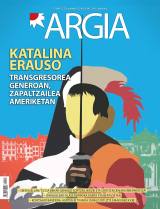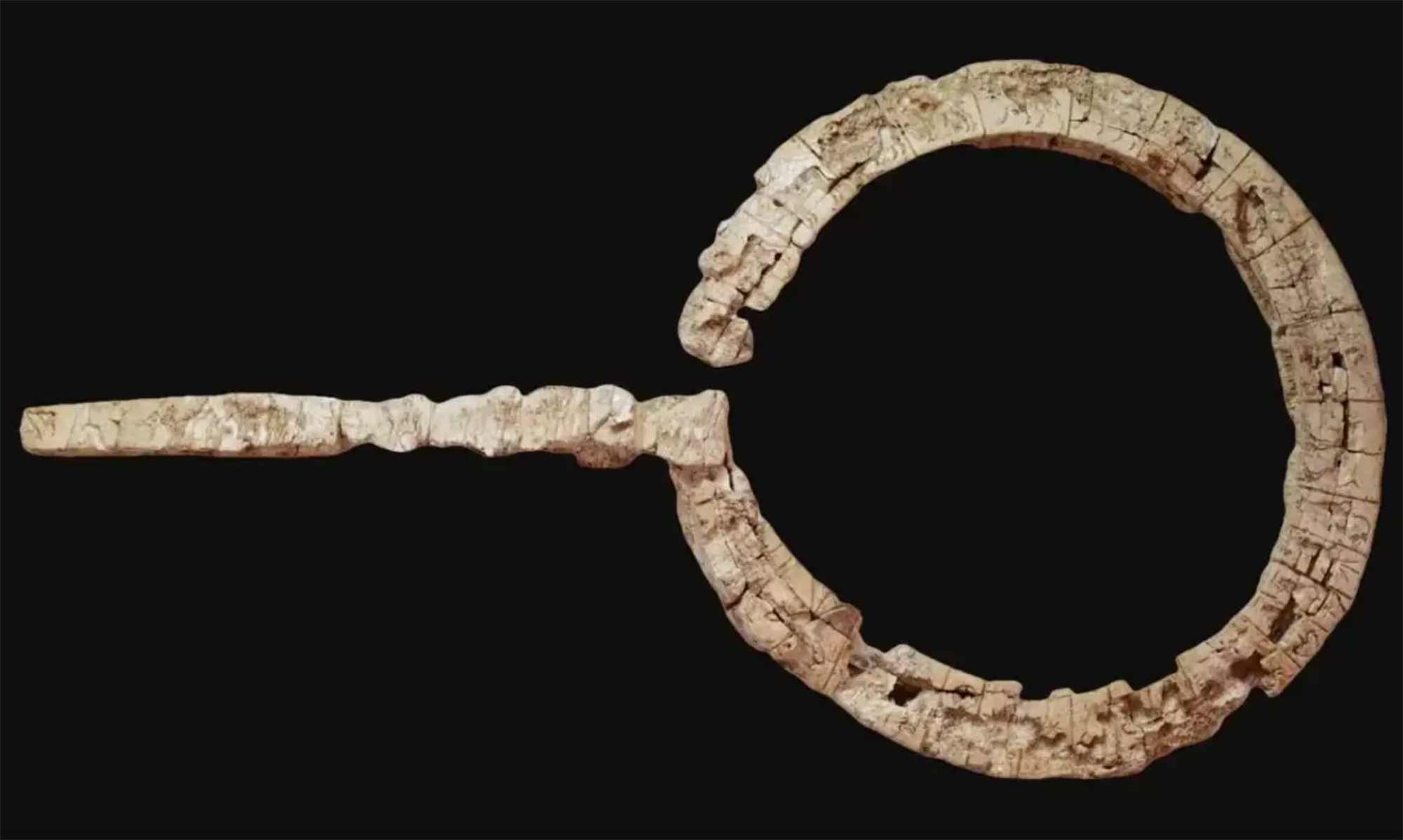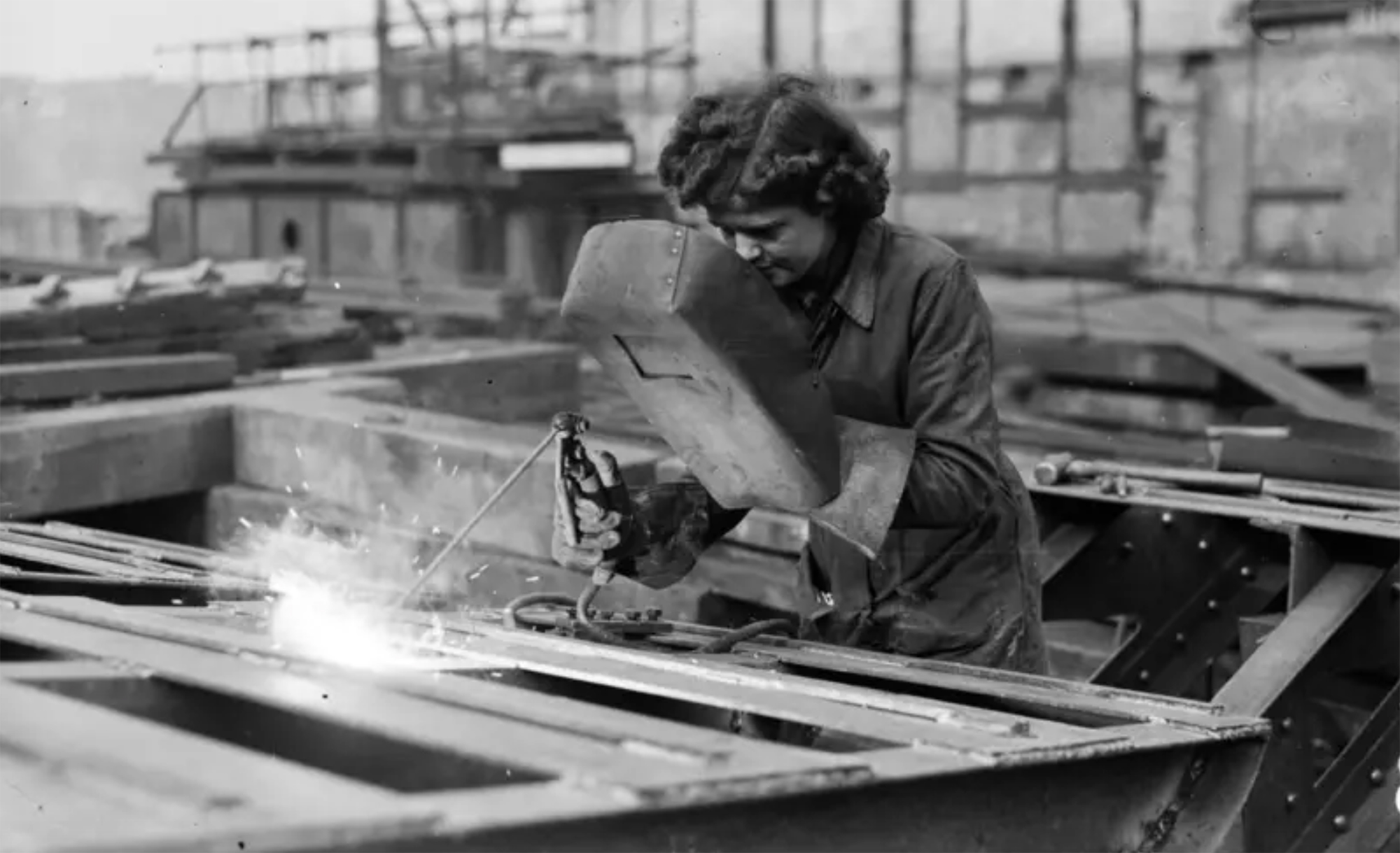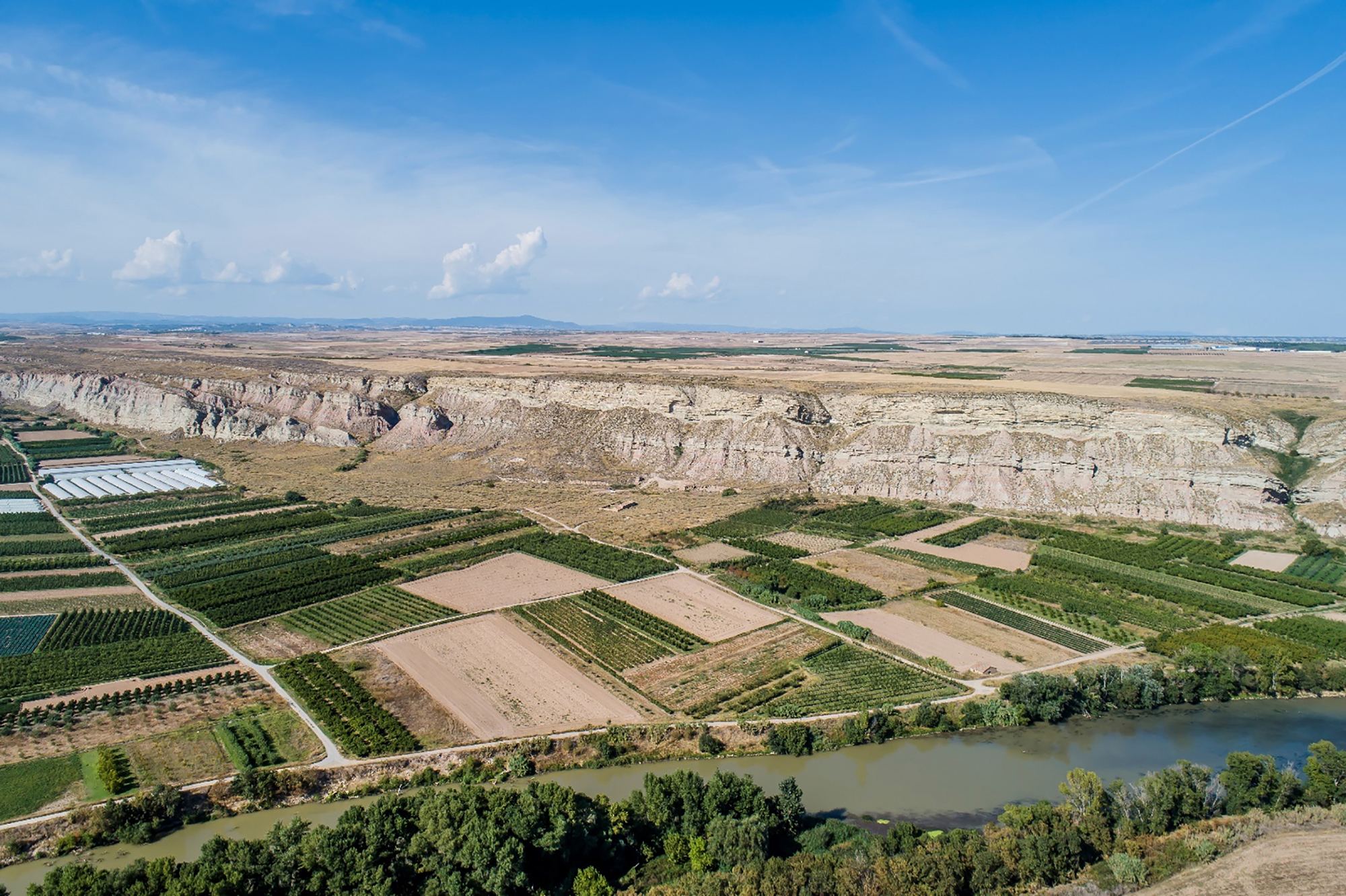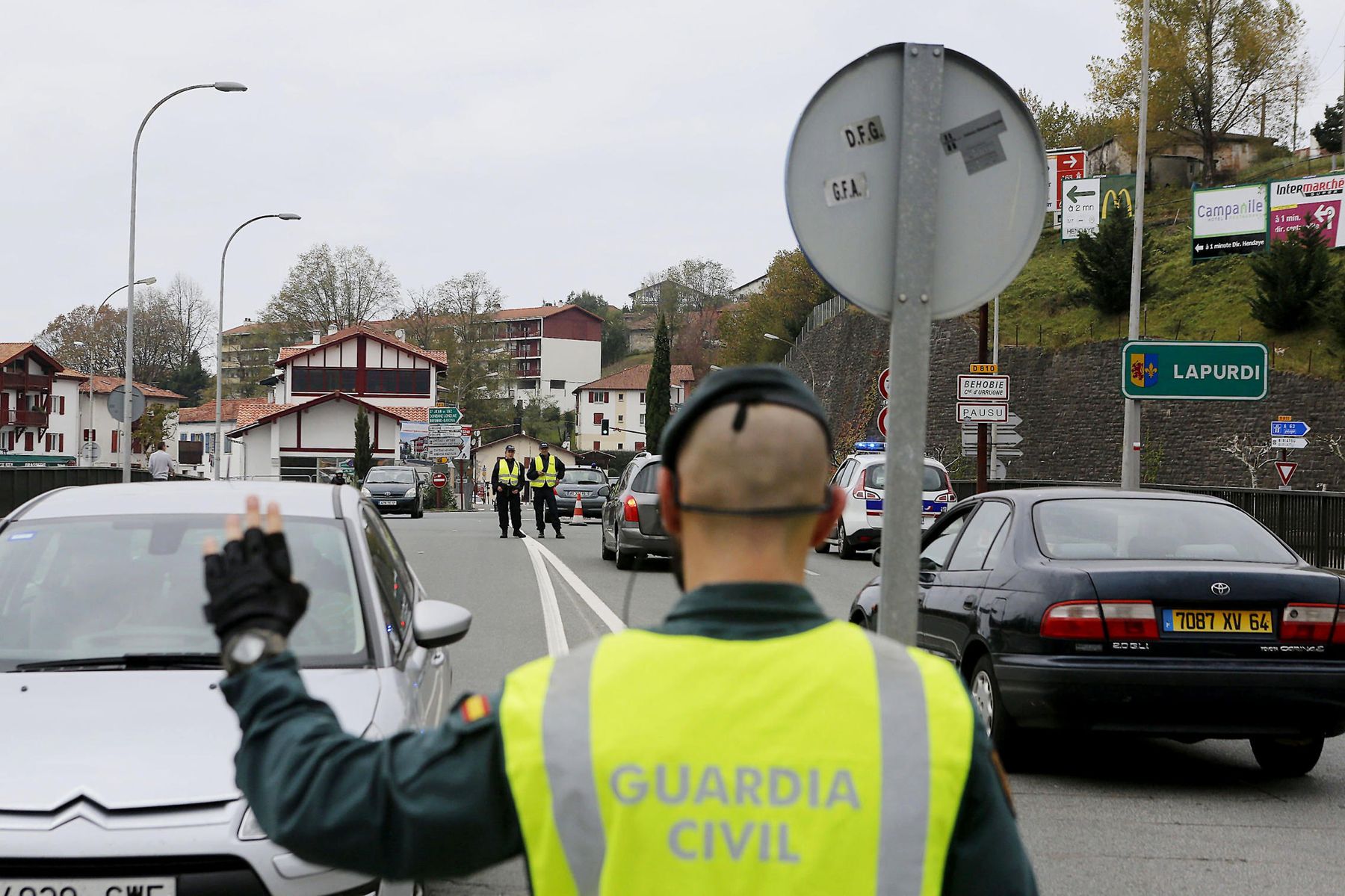When auzolan and competition are mixed
- Like every year, everyone has gathered on the slopes of Mount Igoin. They have come to light from the dark, each from their home. They have walked the road, a long road that has taken hours for some. The day is cleared and the tension is noticeable. They're all there now. Waiting. Grabbing the sickle in his hand, he looked at the field guard, who was at the top of the hillside. Attention. Suddenly, the rural guard raised his arm and brought a light to the sky. The Etxafuego has erupted in the reddish sky this September, with a tropical storm. Silence broke. Below the foothills of the foothills, you only hear a cascading noise. More warts or ferns will be cut until it is done at night. Start this year’s Harrapazka Eguna!

The City Hall of Ereñotzu (Hernani), in collaboration with the Department of Culture of the Provincial Council of Gipuzkoa, launched the Bizitzen Auzolanean project in 2015. In this context he wanted to gather the knowledge and history of the Harrapazka Eguna. Harrapazka Eguna was a special day to cut the carnival and tradition was maintained until 75 years ago – in 1941 it was last celebrated in Hernani. Although many ereñotzuarras have heard it, very few know exactly what it was. The Society of Sciences Aranzadi, in collaboration with the Association of the Basque Country Dobera, has made an effort to locate, interview and record the last testimonies that lived this special day. To all this, the old documents and bibliographic data of the file have been added.
Hipolito Arregui, 98, and the brothers Antonio and Pedro Santa Kruz, 92 and 90, have been our testimonies. Last testimonies of Harrapazka Eguna de Hernani.
But what was the Harrapazka Eguna?
The Day of Plunder was the day when the time was opened to cut the carnival. Until this date it was forbidden to cut the carnival with the risk of being fined. It was a very special day, because of its peculiarities and its importance.
It was celebrated every year around the day of the Virgin of September (8 September), when the carnival began to blush. The City Hall brought out the neighbors to inform them of when and where it was going to do so and those who wanted it had the right to go, as it was done on communal lands. For many it was the day of cutting the carnival for free, while for the City Hall it was the way to manage or regulate the cutting of it. In fact, the Harrapazka Eguna had its own laws and its failure to comply was punishable.
Of each family, two or four – according to the year – only people could participate and she could only wear a sickle to cut the iñistorra.
On the same day, they all began to cut them to the orders of the rural guard. Each of them marked their land, cutting the curb first. The competition was narrow: it was important to cut faster than the people next to you to have more space of your own. The faster they cut, the bigger the plot. Such was, as the word itself says, the looting as quickly as possible, to bring home more wasps. Once “marked” all around, they started cutting the interior.
.jpg)
In the photo, Araldia in Urnieta. Photo holder: PILI Lasa. Ceded by Manuel Larramendi Kultur Elkartea.
“The first day was just free to cut with the sickle,” Hippolytus told us. The Harrapazka Eguna came to an end when the night fell. The next day, in the same place and at the same time, they could still cut the carnival, “but it was allowed to be cut off with the scylla.” In this way, everything was cut off until or caught enough.
An important day full of curiosities
Our testicles tell us how the farthest would do hours in the morning to reach the area where the Harrapazka Eguna was celebrated. They wore front dresses. Type of socks or polains made with pieces of fabric extracted from the bags, and later with blankets from the trash cans, which they placed on the covers. And in the bag they carried everything they had to eat, if they had time to eat, at least… they also carried garrafones with the new cider, because, according to the older ones, “the new cider had to be made by the day of the fuck.” Others, however, “were going to eat at the expense of the people” says Antonio. Also present were the municipal representatives and the rural guards, as well as some representative of the Council, “but they ate the food they brought from the restaurant, eh! And without cutting! On our own!”
At night there were also jokes. People were still cutting in the dark, and the ranger was guarding, changing his clothes and turning his cap upside down for hunting. “On the moon he steals well,” says Peter laughing.
Fight, rivalry -- and auzolan?
There were no more incidents: “You have entered our plot!”, “You have received the carnival that we cut!”... because it was a fight of prey. And that led to fights and problems. The City Hall had to take several sides by remembering the laws. But the iñistor was a necessary raw material that also forced the neighbors to work in auzolan.
Before the time of the Iñistorra’s cut, the so-called “aaldiya” (zeal) was made, which in some villages was also called “malobra”. It was called Araldia auzolana, which was made to fix and adjust the carriageways that were aimed at the Iñistor. Each family had an obligation to bring a representative and if it could not send him, it was his duty to find a substitute. The City Hall put the date by side and made groups to fix the roads. With stones and materials around them, they repaired the roads. However, our testicles also remember other kinds of issues. Because the City Hall had free wine and there were people who had finished singing bertsos that day ...

In the photo, those of the Agerre Farmhouse of Hernani have done a lot, in 1965. Photo: Felix Unzueta Cedido by Kepa Urreaga.
After Aaldiya and Harrapazka Eguna, it was time to cut and go with the chariots in search of the iñistorra that had left to dry in the mountain. Many of them made the appointment with their cars in a certain place, and they all went together, one after the other, in search of the iñistorra, “like a train!”, according to our testimonies “taking good carriageway sounds”. Among the relatives there were not enough people, and on many occasions there was a boom between the dwellings, both to collect the carnival and to do the piles.
Acknowledgements
To all the people who have given us your support, time and information in all the interviews we have made about Iñistorra. Idurre Lekuona, Eñaut Agirre and Xabier Iriarte, for their work in collecting the Harrapazka Eguna.
24 September festival
Organized by the City Council of Ereñotzu and with the cooperation of the Provincial Council of Gipuzkoa, a video and guided tour will be offered in Ereñotzu on 24 September at 9:30 in the Civic Centre of Ereñotzu.
After 30 minutes of video, they will take a tour of the slopes of the mountains where the Harrapazka Eguna was held (from Akola to Igoin-Sasi). Organizers have pointed out that it is "easy to do" (3.5 kilometers with an elevation of 80 meters) and that it will end at 13:30 hours.
The signatory of this article, Iñaki Sanz Azkue, will provide explanations on the Harrapazka Eguna.
Bilatu ditugun Hernaniko Harrapazka Egunaren aurreneko aipamenak 1826koak dira, nahiz eta XVII. mendean dagoeneko Hernaniko dokumentuetan iñistor mozketei buruzko aipuak azaltzen diren. Ez dakigu ordea, garai haietan mozketa hauek harrapazka egiten ziren. Harrapazka Eguna, hasieran Hernaniko herri-lur eta zilegimendietan egiten zen. XIX. mende erditik aurrera, herri-lurrak eta zilegimendiak lote eta partzeletan banatu ziren, eta horietako asko iñistor-toki bihurtu ziren. Ordutik aurrera, Igoin mendiaren magalean, Igoin-sasi izeneko eremuan egin zen Harrapazka Eguna, 1920 eta 1941 artean. Urte horietan, legeak zertxobait aldatu baziren ere, helburuek lehengoan jarraitu zuten.
Harrapazka Eguna egiten zen, baita ere, Andoainen, Urnietan, Errenterian eta Oiartzunen. Herri bakoitzak bere ezaugarriak bazituen ere, oinarrizko legeak antzekoak ziren.
Herritarrek jarritako izena
1826ko dokumentuan, “corte de alhechos” aipatzen da Harrapazka Egunari buruz aritzeko. 1920an, ordea, Hernaniko alkate Gregorio Mendiak sinatutako bandoan “corte de helechos conocido vulgarmente por arrapatzka” idatzi zuen. Herritarrek urtetan erabilitako izena, beraz, izen ofizial bihurtu zen, eta Udalean bertan ere erabiltzen hasi ziren. 5 urte geroago, 1925ean, agertzen da harrapazkari buruz ateratako aurreneko euskarazko bandoa. Eskuz idatzitakoa, gainontzekoak ez bezala. Zera dio: “Alcate jaunaren partetic aicea ematen det, illonen 9 izango dala iñostorren arrapazca, ezdala izango astia coetiac bota arte lengo urtiatan becela”.
1942an, Harrapazka Eguna ospatzeko egun bakarra falta zela, Ricardo Rezola alkateak deia egin zuen, kasu honetan ere euskaraz, hau ez zela egingo adieraziz: “Alkate jaunak adierasten dizute. Arrapatzka debekatuba gelditzendala Usoko mendiyan, aldaketa egindako lekubetan”. Udalak ateratako bando honek eman zion bukaera Hernaniko Harrapazka Egunari.
Aspaldi bukatu ziren iñistorra ebakitzeko egunak Ereñotzun. Iñistorra (Pteridium aquilinum), iratzea edo garoa izenekin ere ezagutzen dena, ezinbesteko lehengaia zen ganadua zuen baserritarrarentzat. Iñistorrik gabe ezin bizi, eta irailaren erdi aldera hasten ziren mozten, hosto-gorritzen hasten zuenean.
Ukuiluan zabaltzen zuten iñistorra. Ganaduaren azpitarako (oheak egiteko) gauza hoberik ez omen zen. Azpitarako erabilitakoarekin egiten zen simaurra ere, baratzerako ongarria.
Pedro Santa Kruzek urtetan ebaki izan du iñistorra baserrirako. Honen garrantziaz galdetu diogunean ez du dudarik egin: “Urrea baino estimatuagoa huen! Orain txerria erretzeko adina ez zen bilduko!”, dio iñistor-tokiak desagertzen ari direla adieraziz.
Gutxi omen dira dagoeneko iñistorra moztera iñistor-tokietara joaten direnak. Iñistor-metak, bizitzeko modu baten azken arrastoak bihurtu dira beraz.
Ereserkiek, kanta-modalitate zehatz, eder eta arriskutsu horiek, komunitate bati zuzentzea izan ohi dute helburu. “Ene aberri eta sasoiko lagunok”, hasten da Sarrionandiaren poema ezaguna. Ereserki bat da, jakina: horra nori zuzentzen zaion tonu solemnean, handitxo... [+]
Linear A is a Minoan script used 4,800-4,500 years ago. Recently, in the famous Knossos Palace in Crete, a special ivory object has been discovered, which was probably used as a ceremonial scepter. The object has two inscriptions; one on the handle is shorter and, like most of... [+]
Londres, 1944. Dorothy izeneko emakume bati argazkiak atera zizkioten Waterloo zubian soldatze lanak egiten ari zela. Dorothyri buruz izena beste daturik ez daukagu, baina duela hamar urte arte hori ere ez genekien. Argazki sorta 2015ean topatu zuen Christine Wall... [+]
Kirola eta oroimena uztartuko dituzte, bigarrenez, mendi-martxa baten bitartez. Ez da lehiakorra izanen, helburua beste bat delako. La Fuga izeneko mendi martxak 1938ko sarraskia gogorarazi nahi du. Ezkabako gotorlekuan hasi eta Urepelen amaituko da. Maiatzaren 17an eginen dute.
Bilbo, 1954. Hiriko Alfer eta Gaizkileen Auzitegia homosexualen aurka jazartzen hasi zen, erregimen frankistak izen bereko legea (Ley de Vagos y Maleantes, 1933) espresuki horretarako egokitu ondoren. Frankismoak homosexualen aurka egiten zuen lehenago ere, eta 1970ean legea... [+]
Fusilamenduak, elektrodoak eta poltsa, hobi komunak, kolpismoa, jazarpena, drogak, Galindo, umiliazioak, gerra zikina, Intxaurrondo, narkotrafikoa, estoldak, hizkuntza inposaketa, Altsasu, inpunitatea… Guardia Zibilaren lorratza iluna da Euskal Herrian, baita Espainiako... [+]
Deportazioaren Memoriarako Euskal Koordinakundeak aintzat hartu nahi ditu Hego Euskal Herrian jaio eta bizi ziren, eta 1940tik 1945era Bigarren Mundu Gerra zela eta deportazioa pairatu zuten herritarrak. Anton Gandarias Lekuona izango da haren lehendakaria, 1945ean naziek... [+]
Guardia Zibilaren historia bat - Hemendik alde egiteko arrazoiak izenburupean, datorren astean argitaratuko dugun 305. LARRUN aldizkariaren pasarte batzuk dira ondorengoak, erakunde armatuaren sorrera garaietan girotutakoak.
Iazko uztailean, ARGIAren 2.880. zenbakiko orrialdeotan genuen Bego Ariznabarreta Orbea. Bere aitaren gudaritzaz ari zen, eta 1936ko Gerra Zibilean lagun egindako Aking Chan, Xangai brigadista txinatarraz ere mintzatu zitzaigun. Oraindik orain, berriz, Gasteizen hartu ditu... [+]









